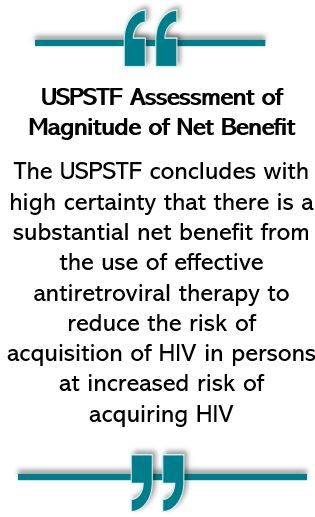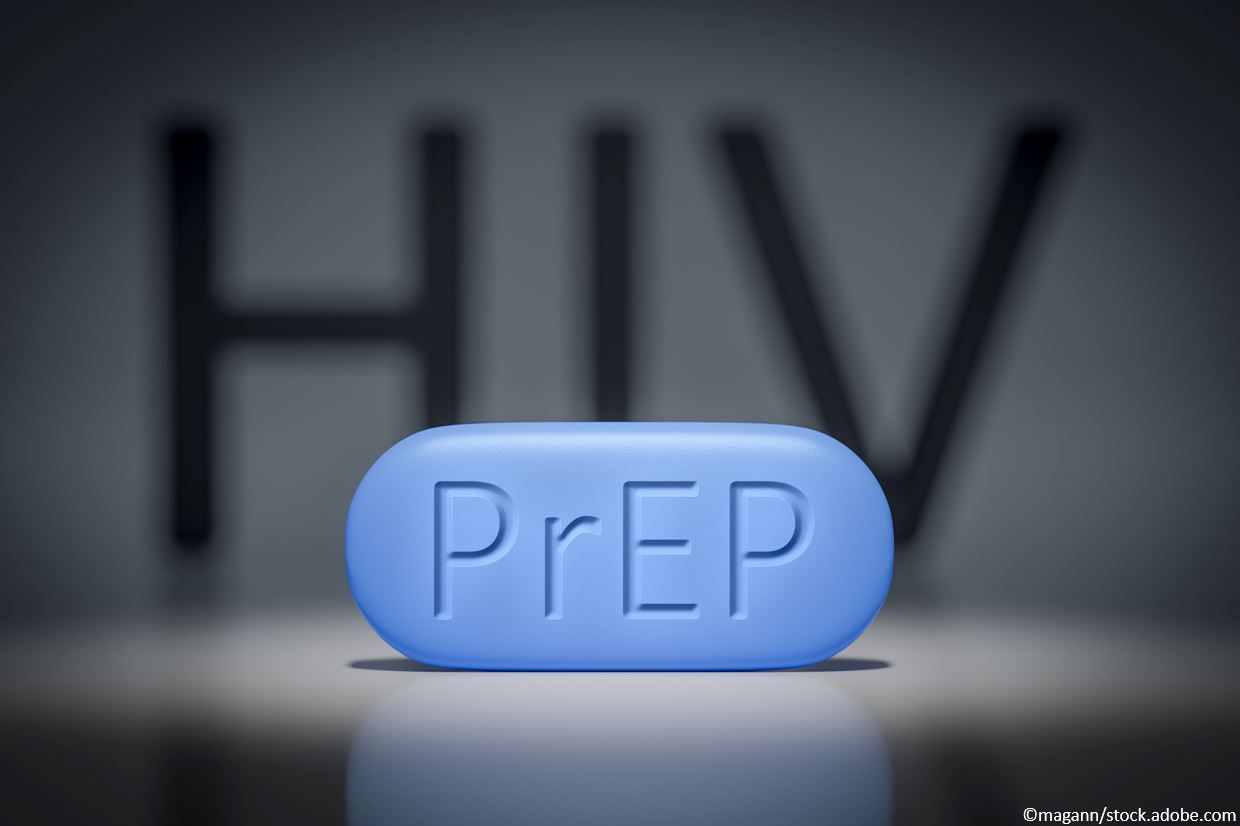USPSTF Publishes Final Recommendation Statement on HIV PrEP
The US Preventive Services Task Force (USPSTF) on August 22 finalized its recommendation on use of pre-exposure prophylaxis (PrEP) in individuals at high risk of HIV infection. The grade A recommendation, published in JAMA, reads1:
"The USPSTF recommends that clinicians prescribe preexposure prophylaxis using effective antiretroviral therapy to persons at increased risk of HIV acquisition to decrease the risk of acquiring HIV."
The recommendation is consistent with the task force's 2019 recommendation as well as the draft of this recommendation released in December 2022.
“PrEP is an essential tool to help reduce rates of HIV in our nation,” said task force member John B. Wong, MD, in a USPSTF statement. “To prevent HIV, it’s important that healthcare professionals prescribe PrEP to patients at increased risk and discuss which form of this medication would be best for them.”2

HIV prevalence1
There are approximately 1.2 million people in the US living with HIV. Tragically, more than 760 000 persons have died of HIV-related complications since cases were first identified in 1981, wrote task force authors in JAMA.1 Of the 30 635 new diagnoses made in the US in 2020, 80% were in adolescent and adult men and 18% among adolescent and adult women. Noting the significant racial disparities in HIV incidence, the authors said 42% of new diagnoses are made in Black persons and an approximately equal proportion of 26% occur in White and Hispanic/Latino persons.
At-risk populations1
PrEP should be recommended only for individuals at increased risk of acquiring HIV, according to the USPSTF. Sexual activity and injection drug use are the 2 primary vectors for HIV infection, making it essential that clinicians discuss sexual and injection drug use history with all patients. It is also important, say the recommendation authors, to inform persons at high risk that HIV is preventable which could facilitate future conversations about PrEP and other forms of prophylaxis.
Populations at particular risk that should be considered for PrEP, according to the guidance statement, are sexually active adults and adolescents who have had anal or vaginal sex in the previous 6 months with a sexual partner living with HIV; those who have had a bacterial sexually transmitted infection (STI) in the past 6 months; people who disclose a history of inconsistent or no condom use; and individuals who inject drugs and have a partner who lives with HIV or with whom they share injection equipment. The risk of HIV infection also is affected by frequency of specific sexual activities and number of sexual partners, the authors add.
PrEP eligibility1
To be considered for PrEP, a person must have a recently documented negative HIV antigen-antibody test result. The Centers for Disease Control and Prevention (CDC) recommend testing with both an HIV antigen-antibody assay and an HIV-1 RNA assay if oral PrEP or postexposure prophylaxis were taken in the previous 3 months or if injectable cabotegravir was received in the past 12 months.
There are currently 3 medications approved by the FDA for use as PrEP: oral emtricitabine/tenofovir disoproxil fumarate (Truvada; Gilead Sciences) and oral emtricitabine/tenofovir alafenamide (Descovy; Gilead Sciences). Cabotegravir (Apretude; ViiV Healthcare) is the first long-acting injectable PrEP approved by the FDA.
Although there are no PrEP medications approved specifically for reducing risk of HIV infection via injection drug use, CDC guidelines stat that persons who inject drugs are likely to benefit from PrEP with any FDA-approved PrEP medication, according to task force authors.
The task force emphasizes that PrEP should not be prescribed for individuals with acute or chronic HIV. Other recommendations include testing for STI and pregnancy before initiating PrEP and ordering tests for kidney function and serology for hepatitis B prior to initiating PrEP that contains tenofovir.
©magann/stock.adobe.com

Treatmnt duration, adherence1
The statement recommends continuing to test for HIV every 2 to 3 months, depending on the formulation of PrEP prescribed. The task force writes that patients can continue to use PrEP as long as the risk of HIV infection persists and also are at liberty to stop and start PrEP medication as the need arises. There are no reliable data on how long after initiation of PrEP full protection may be reached.
Individuals taking PrEP are not protected from infection with other STIs, authors stress, adding that CDC guidelines recommend regular screening for STIs in persons using one of the medications. Moreover, it cannot be emphasized too strongly or often the importance of taking PrEP as prescribed; clinical trials have shown clearly that efficacy is markedly decreased when adherence to protocol is low. Adherence support from prescribing clinicians is a “key component of providing PrEP,” the statement says.
Treatment disparities
Disparities in access to health care affect racial and ethnic minorities affected by HIV, the task force says. “Many people who would benefit from PrEP are not receiving this highly effective medication. This is especially true of Black, Hispanic, and Latino communities,” according to task force member Martha Kubik, PhD, RN, in the USPSTF statement.2 “These inequities must be addressed to achieve the full benefit of PrEP.”2
The authors cite CDC research that shows while members of the Black community account for approximately 40% of the US population eligible for PrEP, in 2019 the number of White individuals prescribed PrEP was 5 times higher than the number of Black individuals.1 CDC data also reveal that the proportion of people with indications for PrEP who received it was 60.5% for White persons vs 7.9% for Black individuals and 13.8% of Hispanic/Latino individuals.1 The task force calls on all clinicians to be sensitive to inequities in access to care when communicating with persons eligible for PrEP and also for additional research on how to reduce barriers in these and other communities affected by HIV.1
Gaps and needs1
Finally, the task force outlines gaps in knowledge and research needs, including:
Research to develop, validate accurate tools for identifying high-risk persons who would benefit from PrEP; instruments should be tailored to include populations at greatest risk.
Research on drug regimens, optimal dosing strategies
Research into factors associated with adherence to/persistence with PrEP, particuarly among populations with known lower rates.
Demonstration projects of PrEP use in populations of heterosexual, injection drug using, and transgender persons to quantify effectiveness.
Research on safety and efficacy in pregnant and breastfeeding individuals.
Studies to evaluate any association of PrEP with other STIs.
Research on long-term safety, efficacy of PrEP, eg, in adolescents, and effects of ART-resistant variants.